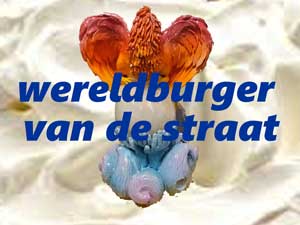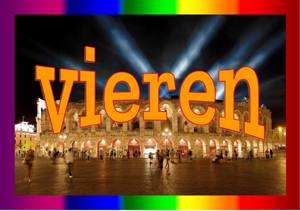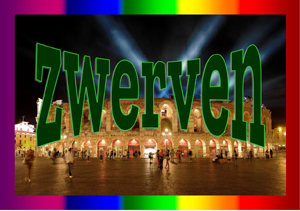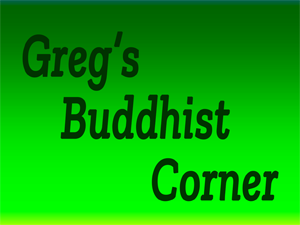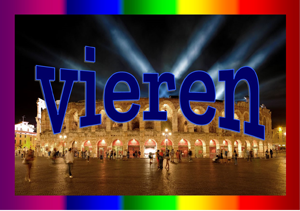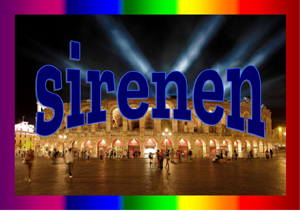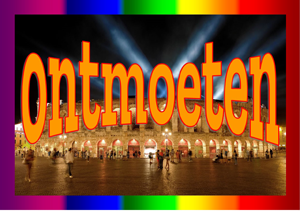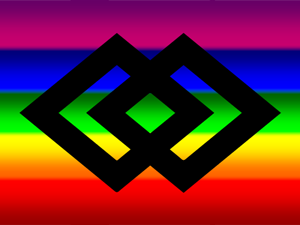By Greg Suffanti
QFWF, quest book no. 3, July 2018
Chapter 2: “God made the World,
But the Dutch made The Netherlands”
Amsterdam would see me hit a brick wall
When I stepped into the airplane in Seattle, Washington, that cold, sunny afternoon in early March of 2000, I felt a sense of relief as I looked out the window and watched the baggage being loaded onto the plane. I could feel the plane vibrate as the workmen emptied their caravan of suitcases into the plane.
I was leaving America and didn’t know if I’d ever be back again.
I felt relief that my twelve-year relationship was finally over, and relief that Peter had fallen in love with someone else. His new love freed me from the responsibility of feeling that I had to stay in Seattle to care for him when the time came that he could no longer care for himself. Peter and I had always been monogamous, but that didn’t keep either one of us from getting sick, and it didn’t keep Peter from falling in love with someone else.
I was leaving everything behind in Seattle. Or at least, I was trying to leave everything behind in Seattle.
I was running away from the truth
In America, I had been running for the last four years: running away from my unhappiness and running away from my illness. Ultimately, I was running away from the truth I couldn’t bring myself to face: I was going to die. And that death was going to be sooner, rather than later.
During the 11-hour flight from Seattle to Amsterdam I began to wonder if I’d ever even make it back to see Peter again? What about my mom, dad and brother in Washington, D.C.? I hadn’t had contact with my father in years. Not since my diagnosis. Not since I had met and fallen in love with Peter. He’d spent his life in the military, had three ex-wives, and a macho upbringing as the son of Italian immigrants that had settled in Brooklyn, N.Y.. Would my father accept that his son was gay? What about dying of HIV/AIDS?
The HIV/AIDS was like living in some place where the threat of nuclear destruction always loomed. Each birthday was my last birthday. Each Christmas celebration, my last.
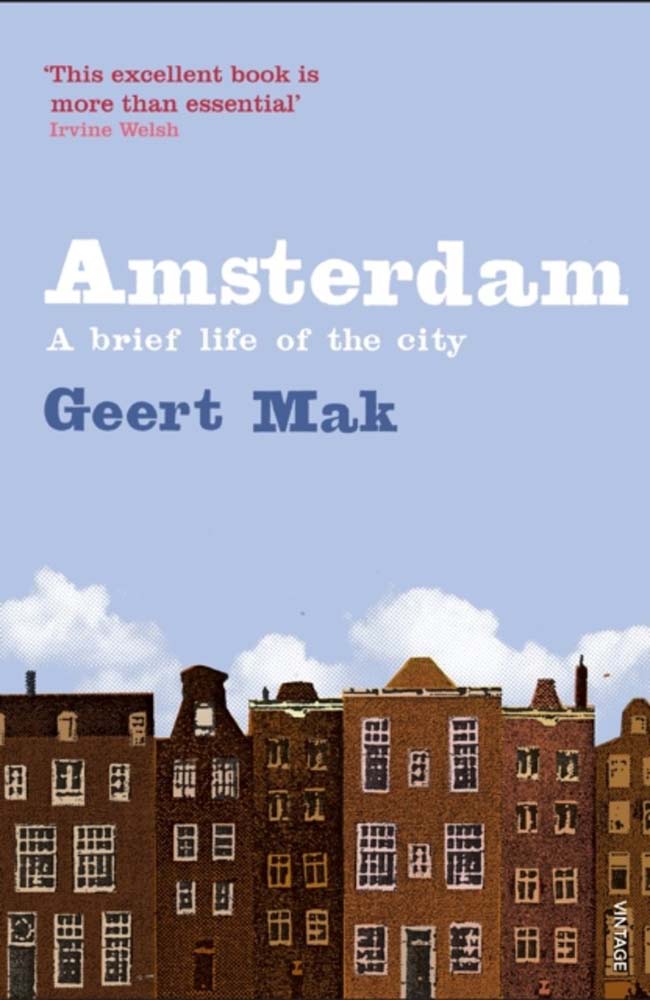 On New Year’s Day, I always thought of the day and the coming year as some sort of death marker; “when my family talk about me, it will be to say that Greg died in such-n-such year”. Whether I died in January or December, the year was the same and whatever year it was, that was the year I thought I would die.
On New Year’s Day, I always thought of the day and the coming year as some sort of death marker; “when my family talk about me, it will be to say that Greg died in such-n-such year”. Whether I died in January or December, the year was the same and whatever year it was, that was the year I thought I would die.
I would discover in my new life in Amsterdam, that there was no escaping the feeling that death was waiting around the corner for me. There was no escaping myself either.
Now, flying out to my new future in Amsterdam, I could feel myself running yet again.
I was nervous and restless inside during that long flight, so I took out my copy of Geert Mak’s “Amsterdam: A Brief Life of the City” and let my focus shift between the pages that told of my future, and my reflections about my past.
Feeling guilty and… in search of a new homeland
My illness represented punishment and failure to me. There was something weak and fundamentally wrong with me for getting ill I felt deep inside. It WAS my fault that I was sick. Maybe I was being punished for being gay? My relationship of 12 years had failed as well: a confirmation that I WAS unlovable.
I could see that through distraction and denial that I had lived in a parallel universe diametrically opposed to my actual reality. I could not see clearly what I was doing to myself, because inside I felt such turmoil and shame. I couldn’t bring myself to confront myself with my hard realities. I was afraid. I was afraid of the truth. It hurt too much.
I arrived tattered and torn at Schiphol airport in Amsterdam that windy, rainy March morning, and I felt every bit the “wretched refuse” in search of a new homeland: in search of a new way of life.
Amsterdam would turn out to be very different than anything I ever could have imagined. Amsterdam would be the end of my running: Amsterdam would see me hit a brick wall.
Because I couldn’t see the good in myself I could only see the negative
It is only with hindsight and the passing of the years that I see why my relationship failed, and no longer feel the pain of what I saw then as an additional failure in my life.
My working life also only seemed to represent hollow disappointment. It would take me years to begin to appreciate my own efforts in both my professional and personal worlds. The habit of judging everything I did as “not being good enough” was an old habit and an ingrained habit that was going to be very hard to break.
Back then I despised myself deep down; I could only see what I thought was wrong with myself and not the good or meaningful parts of myself. Because I couldn’t see the good in myself, I could only see and feel its opposite: the negative.
Keep your nose to the grindstone
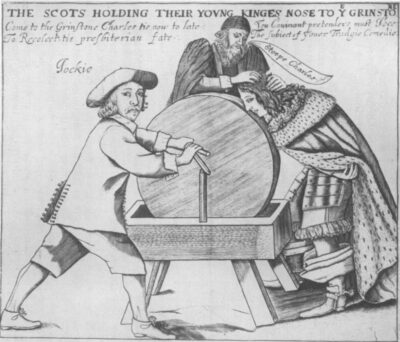
From the time I was a teenager I struggled with low self-esteem issues. Now, between the low self-esteem for myself, the failed relationship and the failed job, I could only see that nothing in my life was going the way I wanted it to, especially my own health.
All of these negatives felt like some sort of permanent part of myself: my dark shadow that followed me everywhere.
I had always fought against these feelings by working hard and following the one real philosophy I knew: “Keep your nose to the grindstone.” So, I did my best to stay focused on my career and not look up from the endless tasks, otherwise my mind drifted towards the fear of the unknown.
At the time, I only saw myself as pathetic and deserving of all the pain that seemed to define my entire life. I saw myself as being punished somehow for being so flawed.
The excitement of the move was all about the move itself, and I had no clue as to what sort of work I might do or how I would go about finding a job. I didn’t know anything about starting a new life in a new country. The details were so overwhelming, that I simply didn’t think about them. Just like with my illness, I pushed reality away and I told myself repeatedly that everything was going to work out: simple as that. It had to.
Upon my arrival in Amsterdam I hired a real estate agent for ex-pats and quickly found a furnished one-bedroom apartment on the Rauschstraat in the center of the city.
The rent was 3,000 Guilders per month, or about $1,500 dollars. Far more than I had anticipated.
I assumed that Holland was like America back then
It turned out that the social housing I was counting on, had wait lists for many years. I wasn’t even a resident, and so I didn’t have any rights, including the right to even stay in Holland for more than three months, let alone rent a social apartment.
I hadn’t anticipated this sort of situation, and I didn’t have enough money saved to afford this sort of long-term expense. I had given Peter the bulk of all our assets because he had no chance for a future, so I felt it was appropriate that he be able to live well in the time he had left. I assumed that Holland was like America back then, and that it was easy to get a job and that I’d be on my feet in a few months.
My apartment was open-plan, with a lovely ground floor terrace
I began to worry almost immediately about finances and finding a job. America isn’t in the European Union, and so I also soon learned that in order to get a job, a potential employer had to prove that there was no one in the entire EU that didn’t want the job that I was potentially being hired for. More bad news.
On the positive side, my apartment had four meter ceilings and was newly renovated. It was open-plan, with a lovely ground floor terrace, surrounded by tall plants and shrubs.
I was practically next door to the OLVG ziekenhuis (hospital), which gave me a feeling of comfort. Even though I was too afraid to do anything regarding my HIV, I was close to medical help should I really need it.
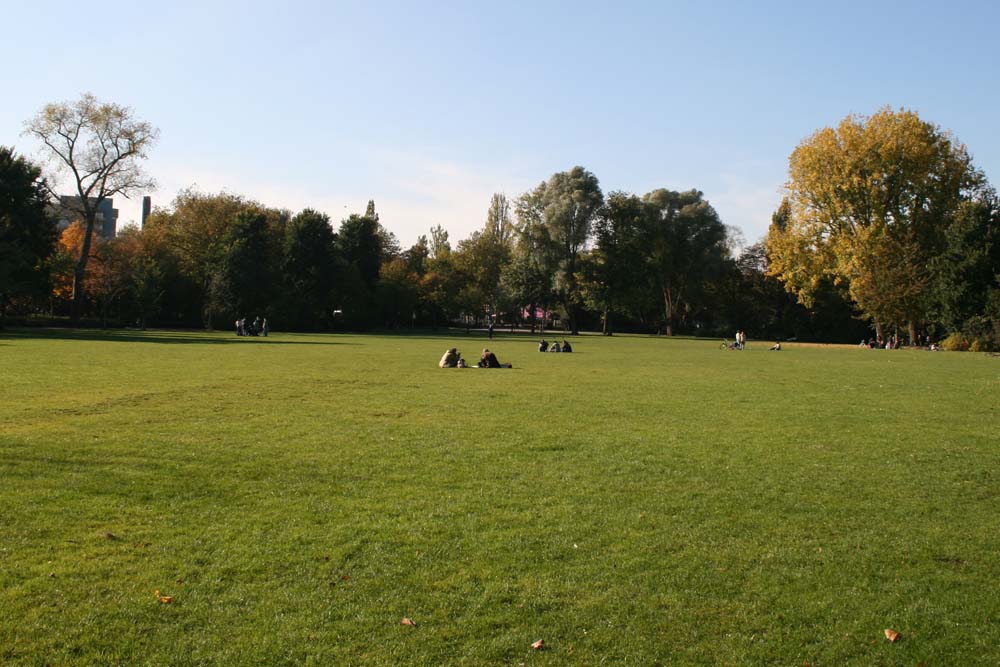
There was a lovely park nearby, called het Oosterpark, which I often walked through in those early days in Amsterdam.
The reality now that I was in Amsterdam was that I felt fatigued and unwell every waking moment. Without the pain medication, I could muster about three or four hours a day of activity. I passed the long hours of the day by exploring the city I was in love with, by reading and thinking about Buddhism and Buddhist ideas, studying Dutch and resting in front of the television.
There were plenty of American television programs on TV, and I took to reading the Dutch subtitles as a way of helping myself learn this difficult and challenging new language.
My mind was like a monkey springing from tree to tree
I was constantly ashamed of my limiting condition, and my new life in Amsterdam started with almost no real contact with other people.
I passed those first days and months mostly in silence, feeling increasingly alone and isolated. My mind was unruly and unpeaceful. I’d count my steps as I walked each day to try to bring some element of control to my wild mind, which leapt uncontrollably between emotions and thoughts like a monkey jumping from tree to tree.
I started praying to the Buddha I was reading about.
I’d always believed in a “higher power”, but I always knew I was gay, and so I always felt unwelcome in the Catholic church in which I was raised. I refused to believe I was going to hell for being gay, and never could accept that a loving God would allow 20,000 children a day to die of malnutrition and disease.
I began praying to the Buddha with all my heart; my pleas for help marked daily by my tear stained face.
Buddhist ideas began taking root in my mind
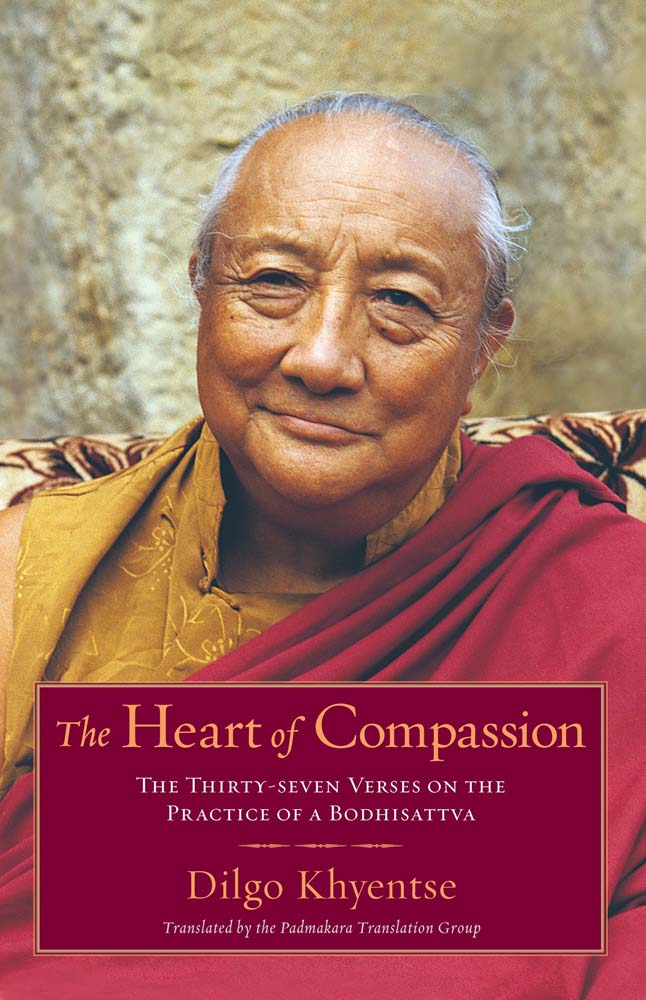 Buddhist ideas that I was reading about began to take root in my mind. A sort of internal/mental spring began to take place within me as I went through my day thinking about what I’d read earlier. These thoughts began to grow and flourish within me.
Buddhist ideas that I was reading about began to take root in my mind. A sort of internal/mental spring began to take place within me as I went through my day thinking about what I’d read earlier. These thoughts began to grow and flourish within me.
HH Dilgo Khyentse’s book, “The Heart Treasure of the Enlightened Ones”, became my constant companion. I felt mentally more relaxed when I’d think about what I’d just read. The activity of occupying my mind with contemplating Buddhist teachings began a lifestyle change for me. I carry this habit with me to this day, because I find it nourishes my heart and mind. This is my daily mind “exercise program” which I began eighteen years ago because I could feel my mental muscles coming to life. From this one small activity I am a happier man today. His Holiness the Dalai Lama talks often about the need for both physical hygiene and mental hygiene.
A string of thoughts grows as time passes…
I had a heartfelt belief that what I was reading was the truth about myself and the truth about life. What I read felt like timeless personal advice.
Dilgo Khyentse writes that
“each thought tends to pick up the momentum of the one before it, so that the influence of a string of thoughts grows as time passes; this is called “the chain of delusion””.
I watched this chain of thoughts building in my mind each day now, but I felt helpless and overwhelmed by these very thoughts and emotions. I liked that Buddhism stresses each person’s worth as well as each person’s ability to follow and succeed on the Buddhist path. This approach has helped me to believe in my abilities through the years. I was very afraid of going to hell back then. I had spent my youth mentally running away from the Catholic church, but I did believe in good and bad futures, and I think there was a big part of me that wondered if maybe my future would include hell.
I was immediately attracted to Buddhism, because it talked so much about changing negative circumstances and the vast power we all possess to help ourselves both in this life and the next life.
I felt confused and deluded and wanted to understand how everything in my mind was connected and how “whatever appears is delusion and has no true existence”.
I wanted to learn how to control my negative and fearful mind. I was being encouraged to look at my mind and to look inward. My mind couldn’t seem to stay still for more than a second, but I felt inspired that there was hope for myself: that there was a solution to my all problems and suffering.
I was inspired by the Dalai Lama
I could intellectually understand what I was reading, even if I couldn’t put it into practice just yet, and this gave me a feeling of hope about my future. Through that feeling of hope, I determined to move forward, one day at a time, so that I could begin to work with my mind and help myself to a happier place. I was as far away as I’d ever been in terms of feeling capable and positive about myself, but that was now my starting point, not my ending point.
There was an undercurrent of fear that defined my whole being back then, and I had to fight against these fear driven thoughts and remain constantly on my vigil almost all of the time.
However, I was so inspired by people such as His Holiness the Dalai Lama, that these beings and their ideas began to make a space in my everyday life; they began to keep me company, and their ideas began to occupy my mind. They were my new friends in my otherwise lonely and friendless life.
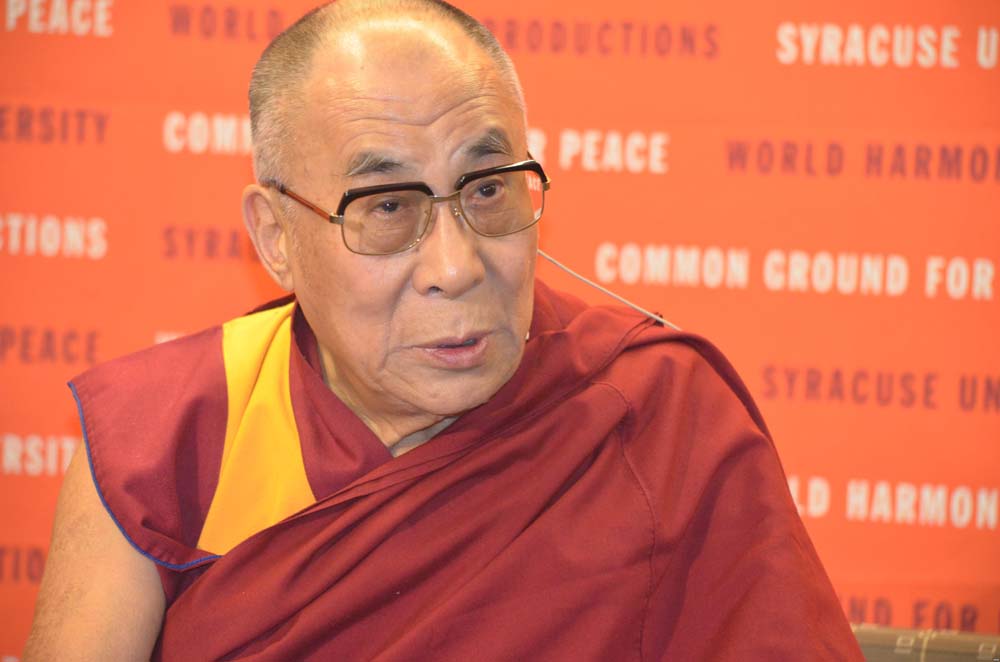
Through the years, Buddhism’s philosophy of understanding how the mind works has continued to guide and inspire me. What I still love so much about Buddhism, is that there is no requirement to believe in something other than yourself.
I was discovering new approaches to life that made sense to me, and they also led me in a safe direction. I only have one Buddhist quote on view at home and it speaks to me now the same way it did all those years ago when I first bought the card:
Confidence in Oneself
Human potential is the same for all.
Your feeling, ‘I am of no value’, is wrong. Absolutely wrong.
You are deceiving yourself.
We all have the power of thought. So what are you lacking?
If you have will power, then you can do anything.
It is usually said that you are your own master.
H.H. The Dalai Lama
The HIV was wildly out-of-control
Seattle had prepared me for chilly, grey weather, but there was a chill and a wetness to Amsterdam on chilly and cold days that seemed to penetrate and weaken me even further. The Dutch call it “waterkoud”, literally meaning water cold, and many afternoons in those first couple of months, I arrived home feeling inconsolably chilled and frail after a brief walk.
I was thirty-five but was living the life of a man that was more like eighty-five.
The HIV was wildly out-of-control now that I no longer took medicine to try to slow its destructive path, and I was severely weakened. I was so carried away in all my fears and excitement about coming to Amsterdam that it had never occurred to me that I was going to have problems now that I had no insurance and no HIV/AIDS medications. Talk about denial!
I was KOPPIG!
The discomfort and pain of the OxyContin withdrawal, or what I thought was the withdrawal, became a permanent part of my waking life. Soon, I realized that it was the HIV that was causing the problems, and not the absence of narcotics in my body.
This unwelcome development isolated me further from fully participating in my new world as I realized my temporary withdrawal was permanent. This reality made me realize that my life was going to be different than I had expected, and it seemed to be a barrier, holding me back from all of life’s possibilities and joys.
I would be lying if I said I went optimistically forward; I went forward because I refused to give up. I went forward because the option of returning to America would have been an admission of failure… and in my heart, failure was not an option.
I was stubborn to the core. The Dutch have a word for this: “koppig”. I would never give up on myself because I was koppig.
I began to immerse myself in the history of my newly adopted homeland
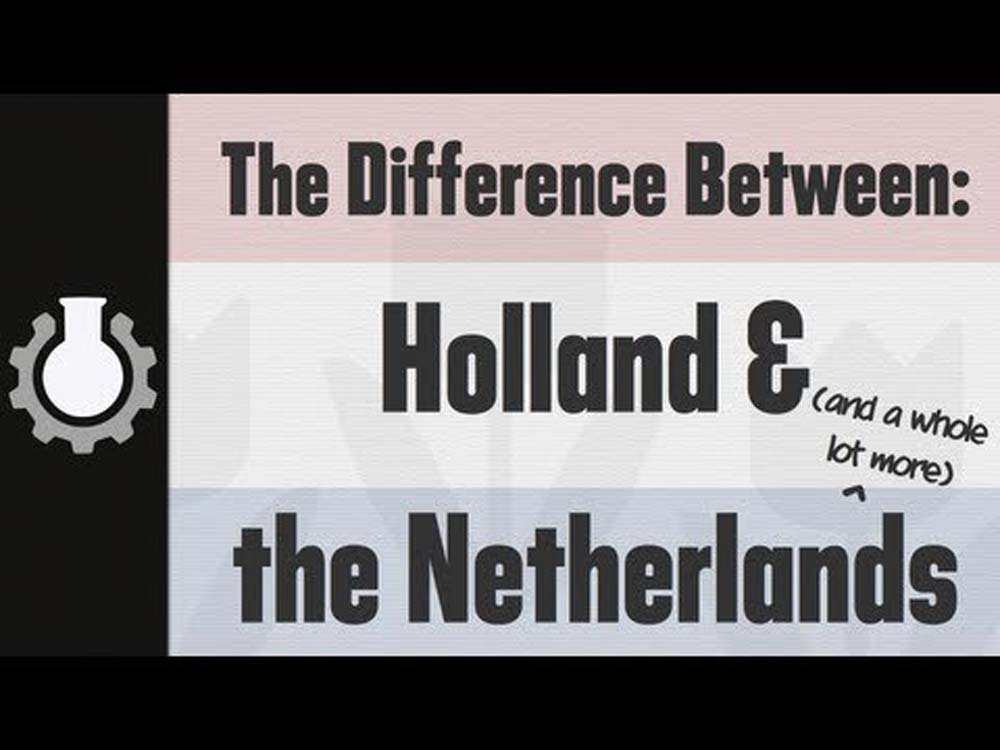
In addition to learning a foreign language, which I immediately set out to do after arriving by enrolling in a private language school in Amsterdam, I began to immerse myself in the history of my newly adopted homeland.
I’d heard this saying, “God made the world, but the Dutch made the Netherlands”, but didn’t quite know what this rather arrogant sounding and commonly used expression meant. And just why did such a tiny country need two names anyway? Holland? The Netherlands?
I was determined that illness wasn’t going to get in the way of my curiosity to know something about the country I was living in.
I was determined to integrate and become as Dutch as any Dutchman, which at that point meant speaking with an accent, eating cheese and hanging out in cozy cafes drinking Heineken beer. I had a lot to learn, because basically I knew nothing. If you had asked me a couple of years earlier which countries border the Netherlands, I would’ve been hard pressed to answer, and would’ve probably not correctly answered Germany and Belgium.
The Netherlands officially came into existence towards the end of the Middle Ages, when the Dukes of Burgundy, a country that is now part of France, united seventeen areas which they called “Les Pays Bas”, or the Low Lands. In 1477, one of the Duke’s daughters married the Roman Emperor, Maximillian I, and the Protestant Netherlands became the property of Catholic Spain. Spanish persecution of the Dutch led to the Eighty Years War (1568-1648).
The Father of the Fatherland
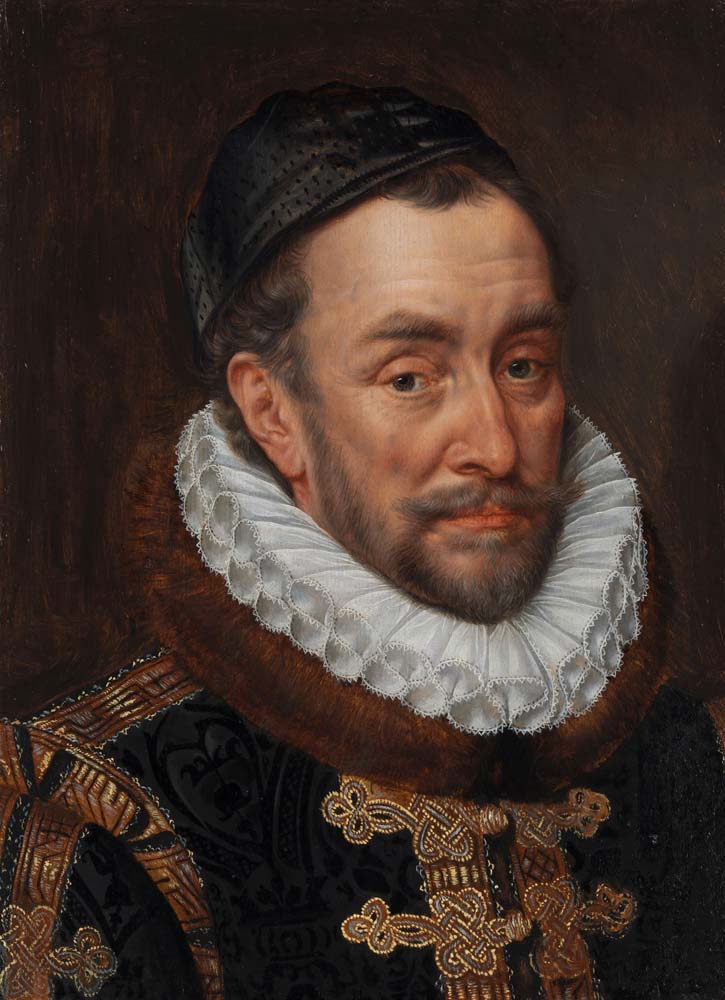
The leader of the Dutch revolt against the Spanish was William of Orange (Willem van Oranje Nassau). He sealed formal independence from Spain for the United Provinces of the Netherlands in 1581.
He is called the Father of the Fatherland (Vader des Vaderlands), and was originally a wealthy nobleman called the Prince of Orange. He is the Netherlands’s first monarch; however, the Kingdom of the Netherlands and the monarchical system wasn’t established until 1815.
The oldest city in the Netherlands is Nijmegen, which celebrated its 2000th birthday in 2005. Amsterdam is relatively young, with toll receipts from the time of Floris V, Count of Holland, providing the first historical records of Amstelledamme in 1275.
The Agreement at Utrecht signified the birth of the Dutch Republic
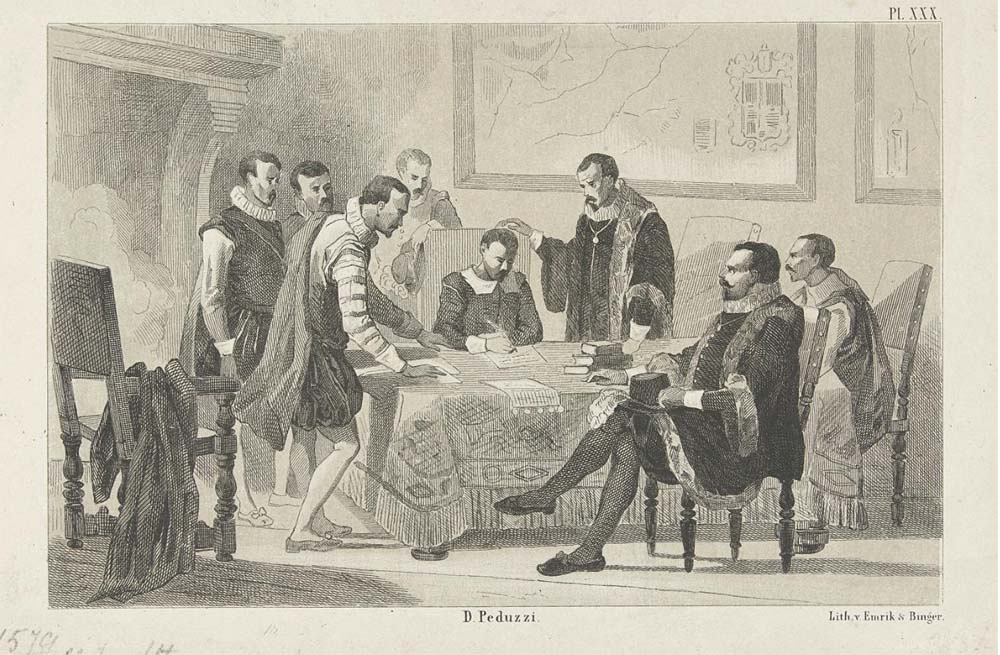
Two years before Dutch independence from Spain, in 1579, the Agreement at Utrecht was formally ratified. Provinces and cities within the Low Countries, which at that time were governed by the States General, and which was based in Brussels, agreed to a closer union in their resistance to Spanish rule. The initial signatories were: Holland, Zeeland, Gelderland and Zutphen. Over the next year, other cities and provinces joined the group, forming a distinct country, which was called the United Provinces of the Netherlands, or, the Dutch Republic.
When you feel claustrophobic from crowds or the heat it is still common to say, “ik heb het Spaans benauwd,” literally meaning “I feel Spanish claustrophobic.” An eighty year war clearly leaves a lasting impression.
Without a system of dykes in the country, the country would be flooded daily, as more than twenty percent of the land lies below sea level. It is estimated that as much as two thirds of the country is vulnerable to flooding. Parts of the North Sea, as well as many lakes, have been “converted” to land.
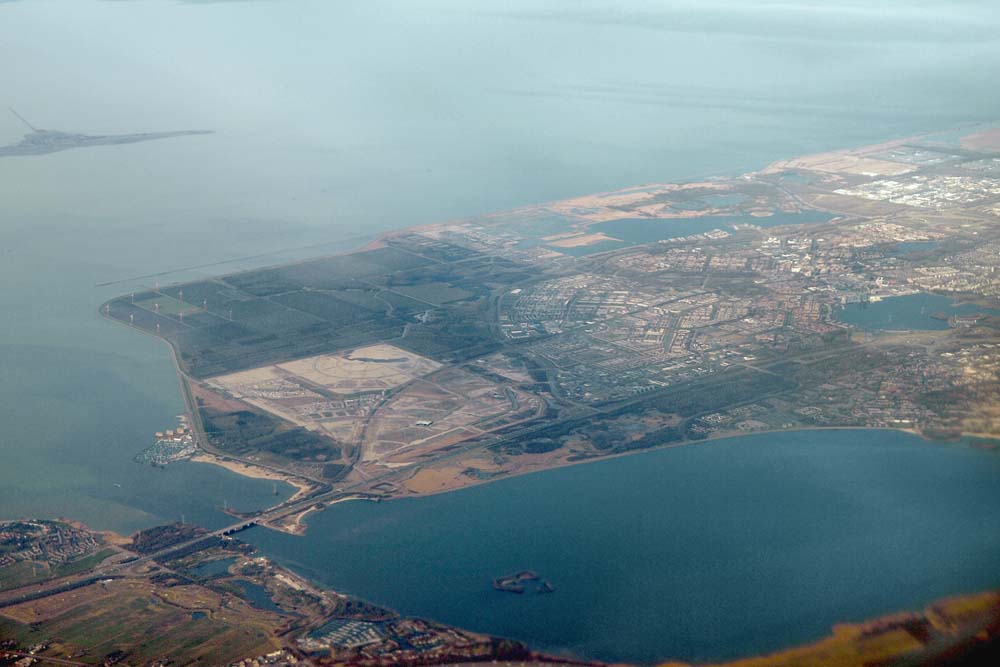
Using dykes and windmills, which direct or drain water from an area, arable land is created and is called a polder.
The Netherlands is sometimes referred to as “Polderland” and similarly, Holland is called “Waterland”.
The newest Province, Flevoland, came into existence in 1986
More recently, in 1986, the southern and eastern Flevopolders were linked together, creating a new province called Flevoland. In fact, most of the land making up Flevopolder was reclaimed during the 1950’s and 1960’s. The Dutch are literally making the Netherlands through their control over water.
The air smelled of the grandeur of another time
I could breathe the history and literally smell the oldness of the city when the air was still. The air in Amsterdam smelled of history and tradition and the grandeur of another time.
I had grown up wanting to be a painter. Suddenly, my love for Dutch art and Impressionism came alive each day as I walked the streets of Amsterdam and drank in its endless variety of people and buildings and its eternal beauty.
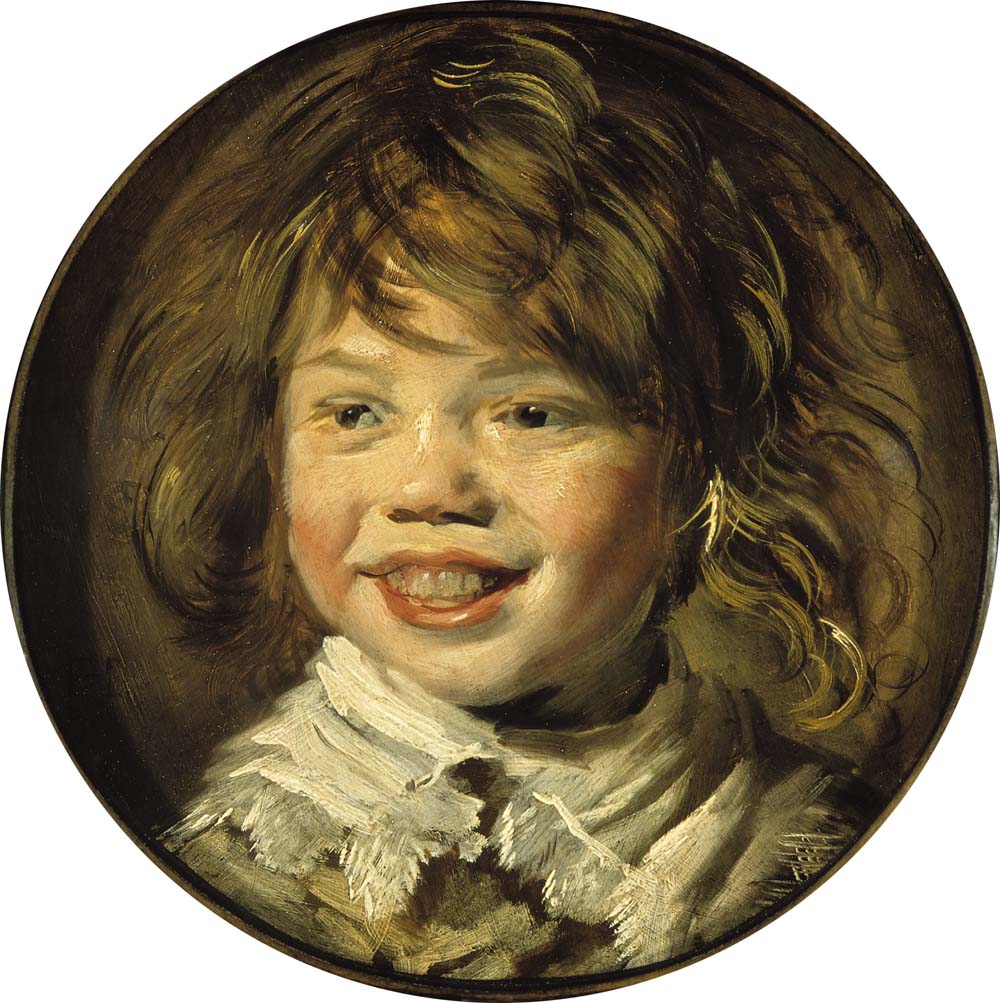
I was living in Europe, something I had always fantasized about when I was growing up: being a painter and living in Paris. That was of course, until I actually went to Paris, and found it too big and frankly too French.
I could walk just about everywhere in Amsterdam, and everyone spoke English, or so it seemed then. Its architecture and culture felt familiar to me from the paintings and engravings of the Dutch Masters I grew up admiring; the special light and hushed stillness of Johannes Vermeer, the mystery, grandness and old world charm of Rembrandt and the lively and alive paintings of Frans Hals.
Amsterdam brought these old images to life for me. The small passageways and brief glimpses of courtyard gardens, recalled Vermeer and the Golden Age of Holland, when the Dutch ruled the world.
The classic Dutch interiors I saw as I walked the city reminded me of another time, a time when Rembrandt walked these very streets.
The canals and flowers seemed like the stark lines and bright colors of Mondrian. The endless variety of “kleurrijk” or colorful people was like Frans Hals’s portraits or like Hieronymus Bosch’s strange and exotic world. The occasional glimpses of the countryside I saw in the distance called me back to Ruisdael and Bruegel. The beauty of the flowers just coming in to bloom and the flowering trees blossoming reminded me of Van Gogh and his bold use of color.
Everywhere I walked I smelled marijuana
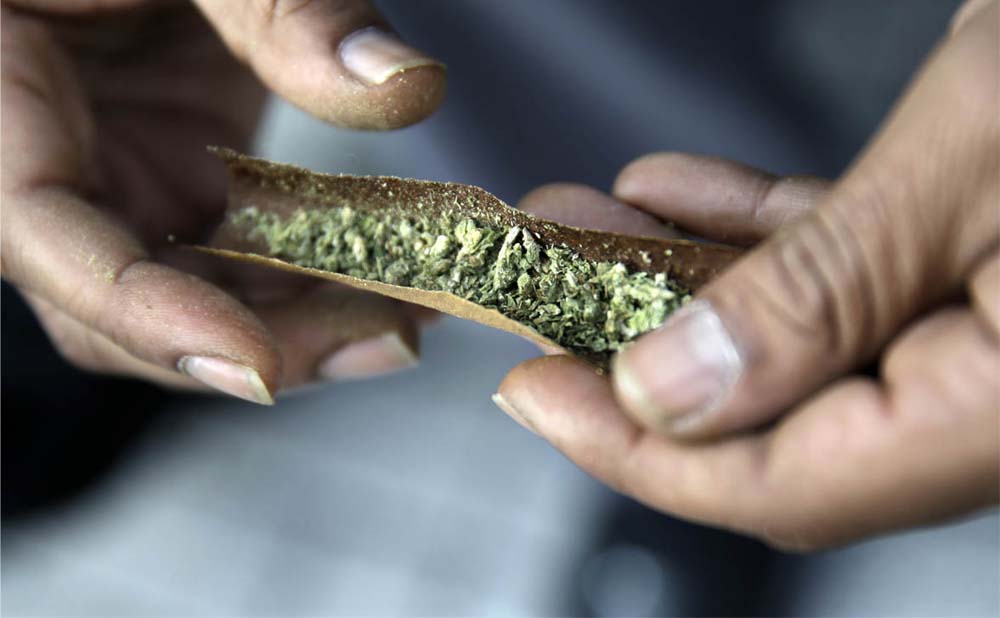
Amsterdam is a young city, teeming with beautiful people. On warm days, their energy spills out from every outdoor café, a joyous, softly raucous symphony of celebration. Bicyclists of all ages fill the streets, and I watched them then, wondering where they were going and what kind of lives they had.
These sights and sounds I found inviting, as if they promised something good and comforting was going to happen for me. It was springtime in Holland, and on warm, sunny days, everywhere I walked I could smell marijuana smoke drifting through the air; a reminder of the city’s progressive, alternative ways.
For those first couple of months, it was like being on honeymoon, and I couldn’t get enough fill of my new bride; everything about her was fascinating and alluring to me.
I was hungry to learn and to forget my problems.
End of Chapter Two, part 1.
(To be continued…)
Notes
[0] Source: The Scots Holding Their Young King s Nose To the Grindstone A satirical view of the Scots imposing conditions on Charles in return for supporting his claims to the Scottish and English crowns, from a contemporary English pamphlet.
[1] Source: Oosterpark field of grass
[2] Source: Dalai Lama at Syracuse University
[3] Source: the-difference-between-holland-and-the-netherlands/ you tube
[4] Source: William Of Orange 1580
[5] Source: Agreement at Utrecht
[6] Source: Flevoland from the plane
[7] Source: Laughing boy by Frans Hals
[8] Source: marijuana hands rolling joint


